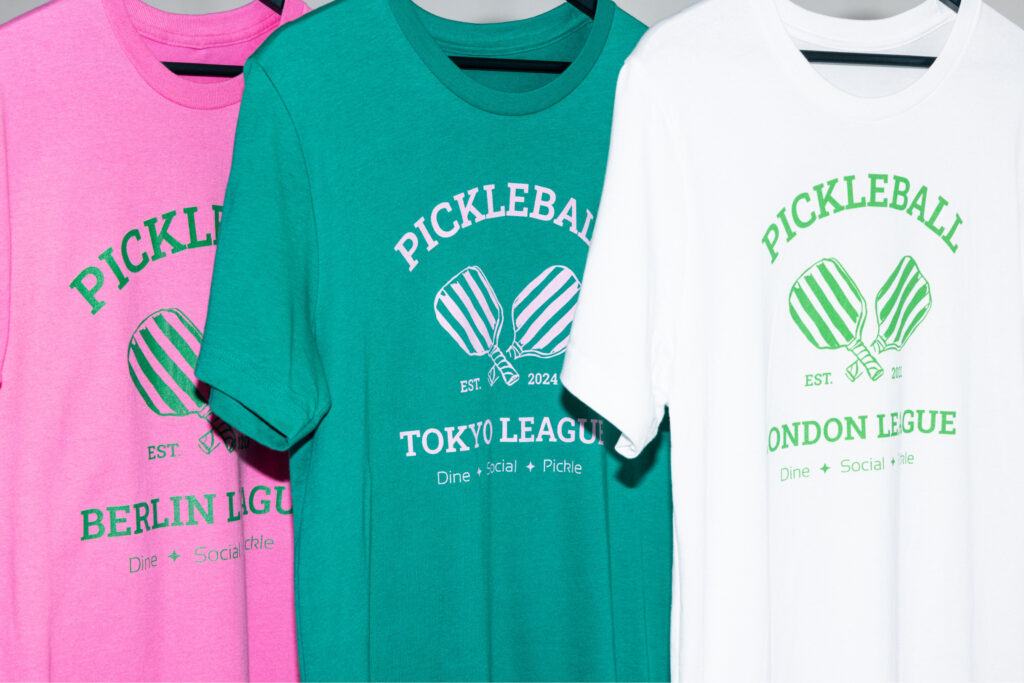Create and sell merch with Printify
Wondering how much Etsy takes per sale? You’re not alone. Before you commit, it’s important to know how Etsy fees work and how they’ll affect your profits. Even small charges like a $0.20 listing fee or a 6.5% transaction fee add up fast.
In this guide, we’ll walk you through every Etsy seller fee one by one. From listing fees and payment processing fees to taxes and optional extras, you’ll see the real cost to sell on Etsy in 2025. Whether you’re offering handmade goods, vintage items, or print-on-demand products, this breakdown will help you price with confidence.
We’ll also share ways to reduce Etsy fees and show how Printify’s Etsy integration helps you keep costs low while building a successful Etsy store.
The information in this article is accurate as of the current date and may change. Consult Etsy’s website for the latest information. Please consult a professional advisor for any financial or legal guidance specific to your situation.
Managing marketplace fees with Etsy payments

Opening an Etsy shop is free, but selling isn’t. Once customer purchases start coming in, you’ll encounter three mandatory Etsy seller fees that apply to every listing and sale. These include the $0.20 listing fee, the 6.5% transaction fee, and payment processing fees through Etsy Payments.
Etsy fees are processed through the Etsy Payments system, and all transactions will be automatically registered and deducted from your Etsy account. Understanding where to track these payments will help you see how to sell on Etsy successfully and stay on top of earnings.
Watch our video on how to open a print-on-demand shop on Etsy to start selling today.
Basic Etsy fees

How much does Etsy charge to sell? We’ll list all fees one by one so you can see how they impact your profit margin, especially when using Print on Demand.
Listing fees ($0.20)
Every time you add new products to your store, you must pay $0.20 in Etsy listing fees. Once paid, the product is published for four months, and you can edit it freely without any additional costs.
A listing with more than one item in stock will stay active as each item sells. Etsy only charges another $0.20 when the listing renews – either after the four-month period ends or when a product sells and there’s remaining stock.
You can turn off automatic renewals if you prefer to manage this manually.
Learn more about managing listing renewals through the Etsy Help Center.
The Etsy listing fee is converted from USD to your payment account currency using the current exchange rate. Renewed listings keep their original stats – views, favorites, and URL – so performance history carries over.
Here is how an Etsy listing fee can appear on your Payment account:
- Listing fee – Initial fee for adding a new item for four months.
- Auto-renew expired – Automatic renewal fee for unsold stock items after four months (disable auto-renewal in the listings settings menu to apply your renewal manually).
- Auto-renew sold – Automatic fee for selling extra quantities of items (more than one listed item).
- Multi-quantity – Fee for selling multiple variations of the same item in one payment transaction.
- Private listing – Fee for a private sale to a designated buyer, unlisted to the public.
With Printify’s Etsy integration, your listings are automatically set to 999 – the highest possible amount when listing on-demand products with no stock limits. After four months, Etsy renews the listing for the full amount, no matter how many items you’ve sold.
Transaction fees (6.5%)
Etsy collects a 6.5% transaction fee in your listing currency for every sale you make. If you’re an Etsy Payments user, the transaction fee is automatically processed through your account once you make a sale.
Etsy’s transaction fees are calculated as a percentage of the sale, including fees for the product, shipping, and gift wrapping. Together, these fees make up the final transaction rate.
Example: If you sell an item for $10 plus $4 shipping, Etsy will charge a $0.65 (6.5%) fee for the product price plus $0.26 (6.5%) for shipping – a total of $0.91.
Payment processing fees (3% + $0.25)
When you sell a product, Etsy deducts a payment processing fee. It depends on your payment processing service and your region’s applicable sales tax or VAT. With Etsy Payments, this fee is a fixed rate plus a percentage (3%-6.5%) of the total sale price.
In the US, the payment processing fee is 3% + $0.25. For detailed fees in other countries, refer to the country-specific processing fees in the Etsy Help Center.
Region-specific fees

Etsy may apply additional mandatory fees depending on your store’s listing currency, applicable taxes, and Etsy platform operations.
These fees affect on-site transactions and vary depending on the Etsy sellers’ region.
Currency conversion fee (2.5%)
If you set your Etsy Payments in a different currency from your product listings, Etsy applies currency conversion fees. This covers the cost of converting customer payments into your payout currency.
The Etsy currency conversion fee charges an additional 2.5% of the total sale amount. The fee is automatically subtracted from your Etsy Payments account.
VAT and sales tax
VAT
Etsy merchants in the European Union and select countries are subject to VAT (value-added tax) fees on the total buyer’s price of an Etsy listing: VAT on items sold on Etsy.
Additionally, Etsy is required to collect VAT on payment processing fees in eligible countries: VAT on seller fees. Explore Etsy’s Help Center to see additional taxable fees for your country.
If you use Etsy Payments, you’ll receive an invoice detailing any VAT charged on applicable seller fees each month. These charges are deducted automatically from your balance. Check Etsy’s Help Center to see if additional VAT rules apply in your country.
Sales tax
Etsy collects monthly sales tax in most US territories to remit to government authorities. Contact your local tax authority if you’re unsure of your applicable state or regional taxes.
All tax remits are calculated and summarized in your Etsy Payments account under Sales and fees – sales tax paid by the buyer (Remitted). You can also opt out of this service and remit taxes independently.
Sales tax fees may vary depending on whether you sell physical or downloadable items. Check out which US regional sales taxes apply to your Etsy listings.
Etsy calculates and collects VAT and sales tax fees on your behalf. At the start of each month, you’ll receive a downloadable invoice summarizing the previous month’s fees.
Taxes and Print on Demand
Link your Etsy account with our print-on-demand service to streamline your Etsy shop ideas. We’re constantly working to keep the tax process on Etsy with Printify as simple as possible.
Already selling on Etsy? Link existing listings to matching Printify products. This way, future orders are fulfilled automatically while preserving your reviews, SEO, and listing history.
Printify automatically collects and remits sales tax in US states where required. If you submit a valid resale certificate, you won’t be charged tax on eligible orders.
For sellers in the EU, you can submit accrued VAT ID in your Printify account to avoid VAT charges on qualifying orders. While Printify doesn’t accept IOSS numbers, we support OSS and IOSS systems to help apply the correct VAT at checkout for EU customers.
If Etsy has already collected tax on an order, you won’t be charged again when importing it to Printify. This prevents duplicate taxation and simplifies your workflow.
Regulatory operating fee
In some countries, Etsy charges a Regulatory Operating fee because the countries are pursuing Digital Services Tax policies that aim to balance costs with in-person selling fees.
If you add these fees into your final product cost, explain any price differences or increases with customers through your Etsy shop policies. Transparency helps manage customer expectations.
With regulatory operating fees, sellers are charged a percentage of the total cost of the product, including the shipping cost, gift wrapping, and personalization, if applicable.
- United Kingdom – 0.32%
- Canada – 1.15%
- France – 0.47%
- Italy – 0.32%
- Spain – 0.72%
- Türkiye – 2.24%
- India – 0.29%
- Vietnam – 1.24%
Optional fees
There are other Etsy fees for optional things like advertising, product personalization, and storefront upgrades. These features support specific marketing goals or niche sales strategies, but they also add to your monthly Etsy store costs.
Etsy Ads fees (cost per click)
An Etsy Ads campaign is the main way to promote your listings within the marketplace. They give your products premium visibility in search results, category pages, and other high-traffic areas.
Etsy uses a cost-per-click (CPC) model for Ads. You’re only charged when someone clicks on your promoted listing – not just for views or impressions. You set a daily budget ($1 to $25), and Etsy automatically manages your bids to get the most exposure.
The actual CPC depends on demand. Listings with strong tags, a clear description, and high relevancy to customer searches may earn better placement on Etsy. Higher bids can also improve visibility when competing for the same audience.
Also, if you’re subscribed to Etsy Plus, you’ll receive monthly Ads credits for Etsy marketing, which let you run ad campaigns at no cost until the credit is used.
Check out our in-depth article to learn how to start an advertising campaign with Etsy Ads.
Offsite Ads fees (12%-15%)
Offsite Ads let Etsy promote your listings across external platforms like social media, search engines, and partner websites. It’s a hands-off way to expand your reach and marketing strategy.
This feature is available to all sellers, but Etsy decides which listings to promote based on their performance and relevance. To improve your chances, focus on strong Etsy SEO to drive traffic and make your listings more appealing to external platforms.
Etsy Offsite Ads work at a percentage rate based on how much your store earned in the past year:
- Less than $10,000 – a 15% ee on sales attributed to Offsite Ads
- At least $10,000 – a 12% fee on sales attributed to Offsite Ads
The off-site advertising fee is limited to $100, even if the total sale percentage might be higher. A sale is attributed to your ad if a shopper clicks on a promoted listing and makes a purchase within 30 days.
Subscription fee ($10/month)
Etsy Plus is a $10/month upgrade from the free Etsy Standard plan, offering extra tools to help grow your online store. Benefits include:
- Monthly Etsy Ads credits
- Discounts on custom web addresses and promotional materials
- Restock request alerts
- Advanced shop customization options
Etsy Plus doesn’t directly improve search ranking, but it helps to improve your storefront, strengthen branding, and attract more buyers over time.
Shipping label fees
Etsy offers discounted shipping labels you can buy for each order. These labels make it easy to print postage, customize packaging, and add branding – an investment that can pay off over time.
Custom postage labels are available through these carriers:
- Australia Post
- Canada Post
- FedEx
- Global Postal Shipping
- UPS
- USPS
- Royal Mail & Evri
Label shipping costs depend on your package’s origin, destination, and dimensions.
In-person selling fee ($0.20)
Create best-selling items on Etsy for your online store and profit from selling those same products in person – at trade shows or seasonal markets – without extra listing fees.
Connect your Etsy account to the marketplace’s point-of-sale system to offer your listings in person while conducting card payments – just like an online Etsy order.
Etsy partners with Square Reader for in-person purchases. Sync your listings with Square for the same $0.20 listing fee. Without Square, you have to pay an additional $0.20 transaction fee.
Additionally, Square lets you eliminate Etsy’s 6.5% transaction fee and payment processing fee for smaller in-person transaction fees.
Pattern fee ($15/month)
Pattern is Etsy’s service for building a custom, standalone store website using your existing listings. It starts with a 30-day free trial and then a $15/month subscription.
While Pattern removes some standard Etsy selling fees, it comes with its own small charges – like domain registration, privacy protection, and Etsy payment processing fees.
Unlike Etsy’s marketplace, Pattern doesn’t bring built-in traffic. It works more like Shopify, meaning you’re responsible for driving visitors to your site. That often means investing in other marketing efforts – such as SEO, social media, email marketing, or paid ads outside of Etsy Ads.
Estimated Etsy fees: Print-on-demand profit breakdown

What percent does Etsy take in total? On average, Etsy fees amount to 20%-25% of the total purchase price the customer pays.
We’ve made a cost-to-sell percentage estimate to visualize your potential end profit when selling print-on-demand (POD) products on Etsy.
This example shows the fees of Printify’s best-selling Unisex Jersey Short Sleeve Tee when sold to a customer in California (accounting for the state’s 7.25% clothing sales tax). We’ll use a 30% profit margin and set the estimated Etsy fees at 20% to see how they affect revenue.
| Cost description | Calculation (USD) |
|---|---|
| Listed buyer’s price (incl. shipping) | +21.70 |
| Etsy listing fee | -0.20 |
| Etsy transaction fee (incl. shipping) | -1.41 |
| Etsy payment processing fee | -0.90 |
| Sales tax paid by the buyer | -1.57 |
| Total Etsy fees charged | -4.08 (19.1%) |
| Profit from Etsy withdrawal | +17.62 |
| Printify production fee | -9.82 |
| Printify shipping fee | -4.00 |
| Total Printify order costs | -13.82 |
| Final profit | +3.80 |
For EU sellers, additional VAT increases total Etsy fees. Always choose a local Print Provider for your on-demand products to reduce shipping costs.
Check out our Etsy Fee Calculator for a precise breakdown of your future earnings.
Financial pros and cons of selling on Etsy – Which is the best option for you?

Selling on Etsy has clear advantages – low upfront costs, built-in traffic, and a simple setup. But it also comes with fees that scale as your business grows. Here’s how Etsy compares to Shopify, a common alternative for higher-volume sellers.
For smaller sellers:
Etsy offers a low-cost entry point into eCommerce. With just a $0.20 listing fee and no subscription fee, it’s ideal for testing product ideas or targeting niche audiences. You only pay Etsy fees when you first list and then once you sell, making it budget-friendly for beginners.
Cost comparison table – Etsy vs Shopify (10 items sold/month):
| Cost Breakdown | Etsy | Shopify (Basic Plan) |
|---|---|---|
| Item cost | $15.00 | $15.00 |
| Items sold | 10 ($0.20*) | 10 |
| Listing fee | $0.20 × 10 = $2.00 | – |
| Transaction fee | $15 × 10 × 6.5% = $9.75 | – |
| Payment processing | ~$7.00 (3% + $0.25 × 10) | ~$7.35 (2.9% + $0.30 × 10) |
| Subscription fee | – | $29.00** |
| Total monthly fees | $18.75 | $36.35 |
For bigger merchants:
Etsy’s transaction and listing fees stack up with sales volume. While you gain exposure from Etsy’s marketplace, these growing fees may add up – making Shopify more cost-efficient for bulk orders over time.
Cost comparison – Etsy vs Shopify (100 items sold/month):
| Cost Breakdown | Etsy | Shopify (Basic Plan) |
|---|---|---|
| Item cost | $15.00 | $15.00 |
| Items sold | 100 ($0.20*) | 100 |
| Listing fee | $0.20 × 100 = $20.00 | – |
| Transaction fee | $15 × 100 × 6.5% = $97.50 | – |
| Payment processing | $70.00 (3% + $0.25 × 100) | $73.50 (2.9% + $0.30 × 100) |
| Subscription fee | – | $29.00** |
| Total monthly fees | $187.50 | $102.50 |
*Items Sold fee on Etsy is an additional listing fee that applies to every subsequent sale of that item. This is not the same as the initial listing fee or later renewal fee for a new or updated listing stock.
**The Shopify Basic plan costs $29/month if paid annually, but $39/month for monthly subscription payments.
Ways to save on Etsy fees

Offer free shipping
Shipping costs vary by location and can affect your profit margin. Offer free shipping to limit expenses. While this isn’t always sustainable, free shipping significantly influences whether a customer chooses to buy. Lacking a free shipping option for larger purchases can increase your store’s cart abandonment rates.
Set your prices in your bank account’s currency
Skip Etsy’s 2.5% currency conversion fee by using the same currency for your listings and payment account. This way, your Etsy shop won’t have to convert the currency of each sale.
Evaluate what listings to run ads for
Start with your best-selling listings when running Etsy Ads. High-performing products are more likely to be prioritized and deliver better returns.
Etsy Ads are carefully monitored on and off-site. The algorithm prioritizes listings with carefully selected tags, curated descriptions, and a high click-through rate.
When selling off-site, consider which platform you want to be featured on, its terms of service, and demographics. Market your products based on the audience you want to attract.
Factor ad spend into pricing
The easiest way to save on Etsy fees is by raising your prices. If you have items consistently receiving sales, adjust the price to better reflect its value and strengthen your profit margin.
Check competitor pricing before raising rates. Staying within the market range keeps your shop competitive while protecting long-term sales.
Sell items in bundles
Bundle products to cut down on Etsy listing fees. For example, instead of listing five items separately at $0.20 each, group them into one bundle and pay a single $0.20 listing fee. Bundling saves costs, increases perceived value, and works especially well for lower-priced or frequently purchased items.
Make a profit on Etsy with Printify
1. Sign up
Register for free and unlock all our beginner-friendly print-on-demand features.
2. Choose a product
Select from 1,300 high-quality items in the Printify Catalog – from apparel and accessories to home decor and everyday items.
3. Design your product
Bring your vision to life with our intuitive Product Creator. Customize your products with precise measurements and free assets.
4. Sell it on Etsy
Seamlessly connect your Printify account to Etsy. List your custom products for free and set flexible prices to balance out Etsy fees.
Choose Printify for the most competitive product prices in Print on Demand, a 24/7 Merchant Support Team, and complete marketplace compatibility through the Printify x Etsy partnership.
FAQ
Standard Etsy fees are subtracted from each listed or sold item as a percentage or flat fee:
- Listing fees ($0.20)
- Order transaction fees (6.5%)
- Payment processing fees (3% + $0.25)
Conditional Etsy fees include:
- Region-specific taxes
- Regulatory operating fees
- Currency conversion fees (2.5%)
Finally, there are optional Etsy fees for ads, features, and paid subscriptions.
On a $100 order:
- Listing fee = $0.20
- Transaction fee = $6.50 (6.5%)
- Payment processing = $3.25 (3% + $0.25)
Total Etsy fees = $9.95. You keep about $90.05.
On average, expect 20% to 25% of each sale to go toward Etsy fees once you factor in listing fees, payment processing, and regional costs like sales tax or VAT.
While base fees equal around 10% of a $100 order, additional costs (like sales tax collection or currency conversion) raise the realistic average cut to 20%-25%.
Only in rare cases, total costs may approach 40% if multiple optional and regional fees stack (like ads, international taxes, and shipping). If that happens, review your Etsy seller fees, shipping strategy, and pricing to protect your margin.
Yes. One of Etsy’s seller fees is the Items sold fee, which takes $0.20 off of every individual item’s sale. Transaction and payment processing fees will also determine how much it costs to sell on Etsy for your individual store. The total percentages average from 20% to 25% per sale.
Etsy fees – including listing fees, transaction fees, and payment processing fees – can take a larger percentage of revenue, especially on low-priced items. To stay profitable, Etsy sellers should build these costs into their pricing strategy. For low-cost products, this often means raising prices slightly to cover all Etsy fees without sacrificing profit.
When comparing Etsy vs Shopify or Etsy vs eBay, fees differ significantly. Etsy charges per listing and takes a percentage of each sale, while Shopify charges a monthly subscription with lower transaction fees. eBay has its own mix of insertion and final value fees.
However, Etsy offers access to a built-in audience specifically looking for handmade, vintage, and custom items – making its fee structure worthwhile for many niche sellers.
Closing thoughts
Running an Etsy store is a great way to reach buyers, but it’s important to understand how Etsy fees will affect your profits. While opening a storefront is free, Etsy sellers still need to plan for listing costs, Etsy payment fees, transaction fees, and any region-specific taxes or charges.
How much does it cost for most sellers? When including only the main listing, payment processing, and transaction fees, Etsy keeps around 20-25% of the total order value.
With smart pricing, fee management, and tools like Printify’s Etsy integration, you can cover costs and build a profitable Etsy shop over time.












